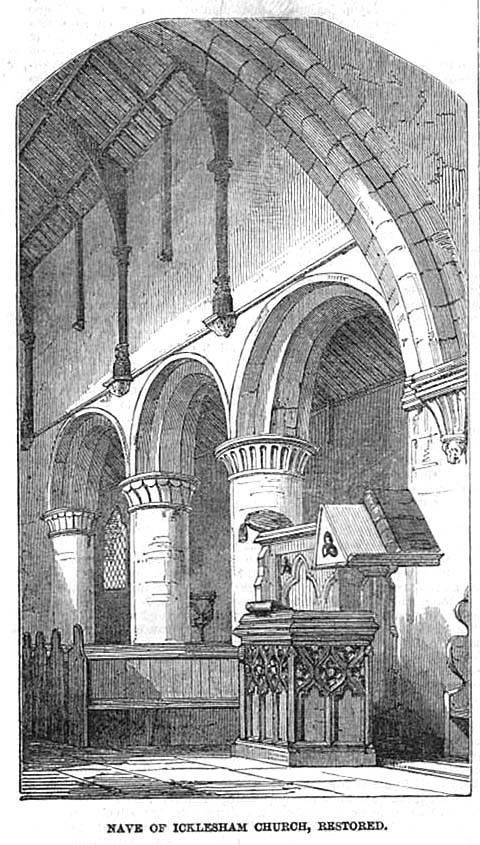www.Gotik-Romanik.de
All Saints & St Nicolas Icklesham
Click on the photos to enlarge them.
Click on the photos to enlarge them.

Image by Icklesham Village on flickr
Link > www.roughwood.net
Link > https://sussexparishchurches.org
Link > Flickr images tagged church Icklesham
____________________________________________________
Icklesham was not mentioned in DS, and there is no evidence that a church existed before the early 12thc. Icklesham is thought to have been one of seven fees held by Humfrey de Wilicheres of the Count of Eu in 1166, but must soon afterwards have passed into the hands of Robert of Icklesham who gave 60 acres of land there to the Cistercian Abbey of Robertsbridge. Robert's son Ralph was alive in 1195, and the present nave arcades must have been constructed during the time of either father or son. Possible patrons of the earlier campaigns cannot be suggested.
The neo-Norman N doorway of the N tower must be ignored, as it replaced a simple wooden door-frame 1847-1852, when the church was restored under the supervision of S S Teulon. The E, W and N bell openings and interior W arch of the tower, all incorporating scallop capitals with projections between the cones, belong to the initial tower campaign, datable to the second quarter of the 12thc. The rib vault of the ground-floor chamber of the N tower was inserted in the second half of the 12thc. The corbels and scallop capitals carrying the formerets and ribs in the NW and SW angles of the bay were probably reused from the initial tower campaign as the scallop capitals, with astragals too large for the shafts which now support them and possibly carved on three sides, have the same form as those on the twin bell openings. The original location of these pieces is difficult to establish, but the capitals may have come from the blocked S bell opening. The waterleaf capitals carrying the ribs and formerets in the NE and SE angles of the bay, however, were carved expressly for the rib vault, and are so similar to capitals in the chancel of Bishopstone that the same team of masons must have been involved. While most traces of medieval painting would have disappeared from the sculpture when whitewash was removed from the interior of Icklesham in the mid-19thc., Churton noted `traces of blue colouring' on the waterleaf capitals in 1882. The nave arcades were built slightly later than the rib vault and are of a type found elsewhere in Sussex, (for example at Bexhill and Steyning). The Icklesham arcade is closest to Bexhill, and was possibly carved by the same workshop,c.1160-75, slightly before Steyning. That the capitals of the arch leading from the S aisle into the S chapel belong to the same campaign as the nave arcades is suggested by details such as fluted leaves with rounded tips, although the voluted form of the capitals already announces those employed in the arcading of the chapels and chancel,c.1200. All of the sculpture appears to be carved from Caen stone (Livett,p.50)
return to > www.Gotik-Romanik.de < back